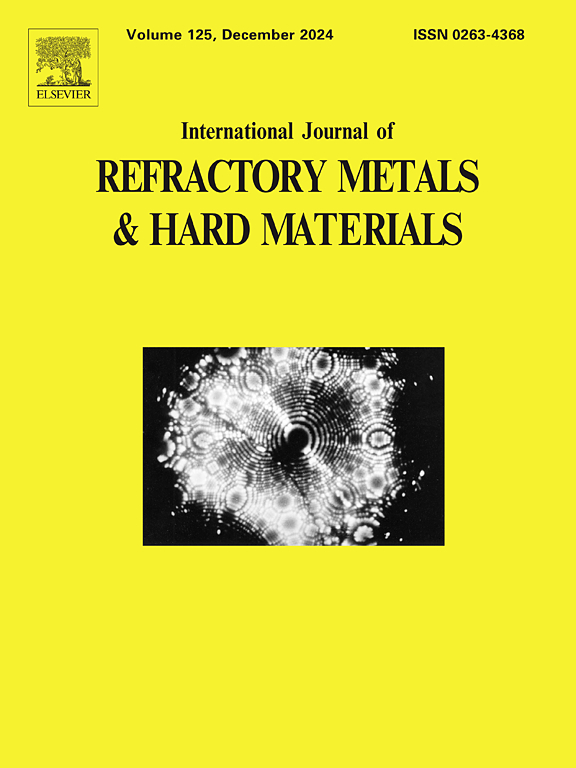Study of superconducting properties of orthorhombic hard monoborides MB (M = Ta, Nb, W): First-principles calculations
IF 4.2
2区 材料科学
Q2 MATERIALS SCIENCE, MULTIDISCIPLINARY
International Journal of Refractory Metals & Hard Materials
Pub Date : 2025-04-25
DOI:10.1016/j.ijrmhm.2025.107190
引用次数: 0
Abstract
In this work, we have realized a comprehensive assessment of the physical properties of MB (M = Ta, Nb, W) monoborides by conducting ab initio pseudopotential calculations based on the density functional theory with its generalized gradient approximation. According to their electronic density of states, the d-orbitals of transition metal atoms contribute most to the electronic bands of the studied monoborides near the Fermi energy level, which makes them metallic. Detailed analysis of their elastic and mechanical properties reveals that all the studied monoborides have good hardness, which makes them promising candidates for the protection of cutting and forming tools. Analysis shows that WB has an electron-phonon coupling parameter of 0.551, which is significantly more extensive than TaB and NbB (0.228 and 0.220). Its relatively large electron-phonon coupling parameter makes WB superconducting at 2.794 K, being in excellent agreement with its measured value of 2.8 K. Between the studied monoborides, only WB is a hard superconductor with a ductile character and is promising the compound for exploring exotic phenomena due to the interplay of hardness and superconductivity.
正交硬单硼化物MB (M = Ta, Nb, W)超导性能研究:第一性原理计算
在本文中,我们基于密度泛函理论及其广义梯度近似,通过从头计算伪势,实现了对MB (M = Ta, Nb, W)单硼化物物理性质的综合评价。根据它们的电子态密度,过渡金属原子的d轨道对所研究的单硼化物在费米能级附近的电子带贡献最大,使它们具有金属性质。对其弹性和力学性能的详细分析表明,所研究的所有单硼化物都具有良好的硬度,这使它们成为切削和成形工具保护的有希望的候选材料。分析表明,WB的电子-声子耦合参数为0.551,明显大于TaB和NbB(0.228和0.220)。其较大的电子-声子耦合参数使WB在2.794 K时具有超导性,与测量值2.8 K非常吻合。在所研究的单硼化物中,只有WB是具有延展性的硬超导体,由于硬度和超导性的相互作用,它有望成为探索奇异现象的化合物。
本文章由计算机程序翻译,如有差异,请以英文原文为准。
求助全文
约1分钟内获得全文
求助全文
来源期刊
CiteScore
7.00
自引率
13.90%
发文量
236
审稿时长
35 days
期刊介绍:
The International Journal of Refractory Metals and Hard Materials (IJRMHM) publishes original research articles concerned with all aspects of refractory metals and hard materials. Refractory metals are defined as metals with melting points higher than 1800 °C. These are tungsten, molybdenum, chromium, tantalum, niobium, hafnium, and rhenium, as well as many compounds and alloys based thereupon. Hard materials that are included in the scope of this journal are defined as materials with hardness values higher than 1000 kg/mm2, primarily intended for applications as manufacturing tools or wear resistant components in mechanical systems. Thus they encompass carbides, nitrides and borides of metals, and related compounds. A special focus of this journal is put on the family of hardmetals, which is also known as cemented tungsten carbide, and cermets which are based on titanium carbide and carbonitrides with or without a metal binder. Ceramics and superhard materials including diamond and cubic boron nitride may also be accepted provided the subject material is presented as hard materials as defined above.

 求助内容:
求助内容: 应助结果提醒方式:
应助结果提醒方式:


